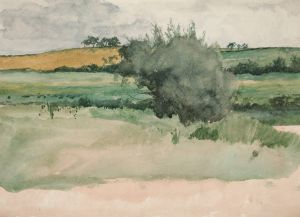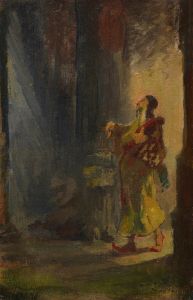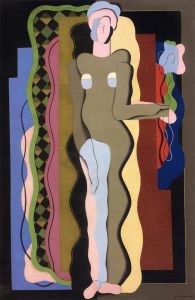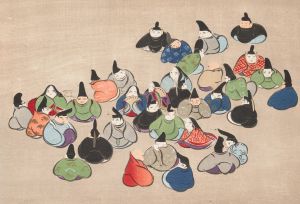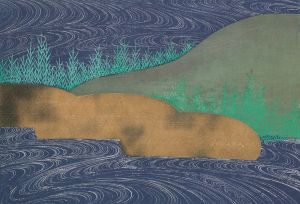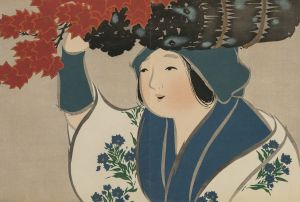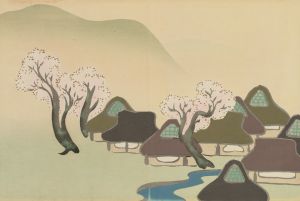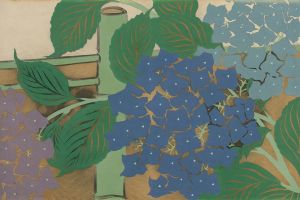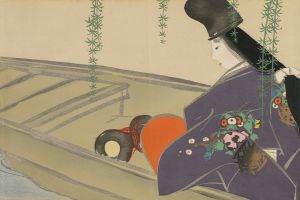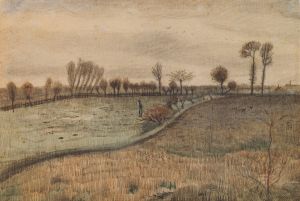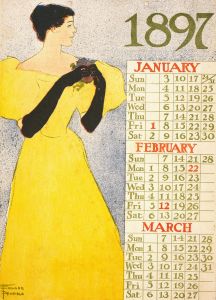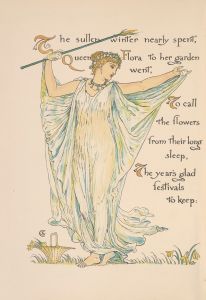
Flower-draped Carts
A hand-painted replica of Kamisaka Sekka’s masterpiece Flower-draped Carts, meticulously crafted by professional artists to capture the true essence of the original. Each piece is created with museum-quality canvas and rare mineral pigments, carefully painted by experienced artists with delicate brushstrokes and rich, layered colors to perfectly recreate the texture of the original artwork. Unlike machine-printed reproductions, this hand-painted version brings the painting to life, infused with the artist’s emotions and skill in every stroke. Whether for personal collection or home decoration, it instantly elevates the artistic atmosphere of any space.
"Flower-draped Carts" is a renowned artwork by Kamisaka Sekka, a prominent Japanese artist and designer known for his contributions to the Rinpa school of painting. Sekka was born in 1866 in Kyoto, Japan, and became one of the most influential figures in the revival of traditional Japanese art during the late Meiji and Taisho periods. His work is celebrated for its innovative blend of traditional Japanese aesthetics with modern design elements.
The Rinpa school, which Sekka was associated with, is a historical school of Japanese painting that was founded in the early 17th century. It is characterized by its use of vibrant colors, bold compositions, and a focus on nature and classical themes. Sekka's work often reflects these characteristics, and "Flower-draped Carts" is no exception.
"Flower-draped Carts" is a part of Sekka's series of works that explore traditional Japanese motifs with a modern twist. The artwork features a depiction of carts adorned with an array of flowers, a common theme in Japanese art that symbolizes the beauty and transience of nature. The use of carts, often referred to as "gosho-guruma" or "ox carts," is a nod to the Heian period, when such carts were used by the nobility. In Sekka's work, these carts are lavishly decorated with flowers, creating a striking visual contrast and highlighting the artist's skill in composition and color.
Sekka's approach to this piece demonstrates his mastery of the Rimpa style, with its emphasis on decorative beauty and elegance. The artwork is noted for its use of flat planes of color and simplified forms, which are hallmarks of the Rinpa aesthetic. Sekka's ability to harmonize traditional themes with a modern sensibility is evident in the way he renders the flowers and carts with a sense of rhythm and movement.
The influence of Western art and design is also apparent in Sekka's work. During the Meiji period, Japan underwent significant cultural and artistic changes, with increased exposure to Western art. Sekka was instrumental in integrating these influences into Japanese art, and "Flower-draped Carts" reflects this synthesis. The piece exhibits a balance between traditional Japanese techniques and Western-inspired elements, such as perspective and shading, which were not commonly used in earlier Japanese art.
Kamisaka Sekka's contributions to Japanese art extend beyond his paintings. He was also involved in various design projects, including textiles, ceramics, and lacquerware, further showcasing his versatility and impact on the decorative arts. His work played a crucial role in the modernization of Japanese art, and he is often credited with helping to preserve and revitalize traditional Japanese aesthetics for future generations.
"Flower-draped Carts" remains a significant example of Sekka's artistic legacy, embodying the fusion of tradition and innovation that defines his oeuvre. It continues to be appreciated for its beauty and historical significance, representing a pivotal moment in the evolution of Japanese art.





